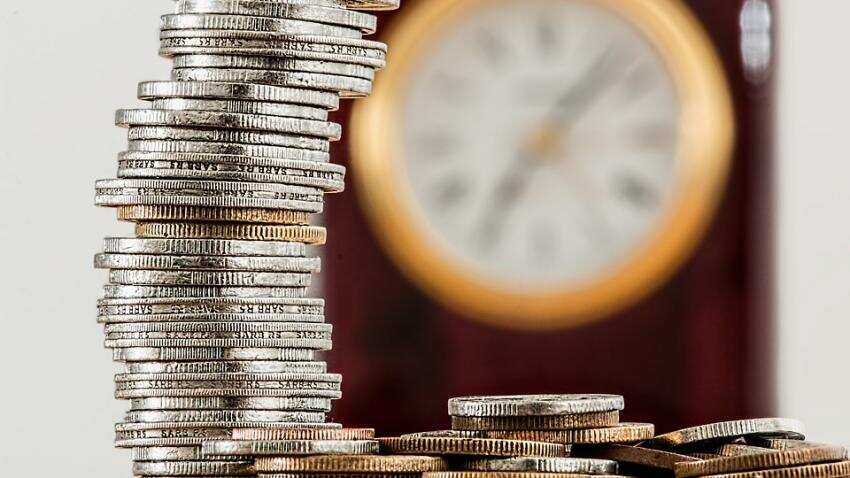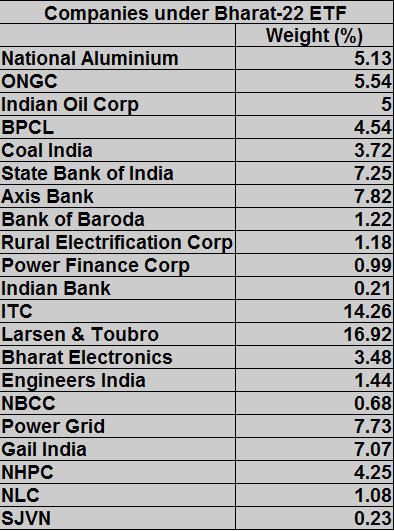Bharat-22 ETF: Is it worth investing in this fund?
The government of India before the launch of Bharat-22 ETF said, "The strength of the Index has been demonstrated in its performance from the time of its launch in August 2017 wherein it has out-performed the NIFTY-50 and Sensex."

Key Highlights:
- Bharat-22 ETF available at 3% discount
- Bharat-22 ETF managed by ICICI Prudential Mutual Fund
- Bharat-22 ETF got oversubscribed by 6 times from anchor investors
The government's Bharat-22 Exchange Traded Funds (ETF) on Wednesday was made available for non-anchor investors for subscription. The issue is open till November 17, 2017.
Non anchor investors involve retail individual investors (RII), Qualified Institutional Buyers (QIB), Non-institutional Investors (NII) and newly added retirement funds (RI) investors.
Bharat-22 ETF which was launched in August 2017 - has been set up by government as a tool to achieve their disinvestment target for fiscal year 2017-18 (FY18).
A day before being available for non-anchor investors, Bharat-22 received good response from anchor investors as they oversubscribed it by six times.
With this, the ICICI Prudential Mutual Fund managed Bharat-22 ETF has raised about Rs 12,000 crore. The government rooted to raise about Rs 8,000 crore from this scheme and only 25% of the target was allotted to anchor investors.
As per ICICI Prudential website, for RII investors the minimum application amount has been set at Rs 5000 and Rs 2,00,0001 each for RFs, QIBs and NIIs – with no lock-in period.
Now that the scheme is available for individuals like us, it highly important to understand Bharat-22 before subscribing.
Firstly an ETF is a kind of fund which consolidates other assets like bonds, stocks, commodities, etc and distributes the ownership of the assets into equity shares. Primary goal of this fund is to yield high returns for it's investors at a minimum cost. They are similar to stocks as they several advantages like low cost, tax efficiency and the flexibility.
According to Bankbazaar, ETFs not only feature comparatively lower costs of distribution but also have a significantly wider reach. This can be attributed to the fact that these funds are listed on the stock exchange. As a result, the savings made on the distribution costs are transferred on to the investors by way of lower costs. Additionally, the structure of ETFs helps bring down various other processing related costs of disbursement, collection, etc."
It added, since the fund helps keep a check on the extra transaction costs involved in the purchase a of index shares because of regular subscriptions and redemptions, exchange traded funds safeguard long term investors from the outflows and inflows of short term investors.
Bharat-22 represents six core sectors namely major industries which carries highest weightage of 22.52%, followed by utilities at 20.63%, finance at 18.67%, energy at 18%, FMCG at 14.26% and basic materials at 5.13%.
The scheme tracks the S&P BSE Bharat 22 Index (‘Index’) that comprises total of 22 stocks from the universe of Central Public Sector Enterprises (CPSEs), Public Sector Undertakings (PSUs), Public Sector Banks (PSBs) and companies with stakes held under SUUTI (Specified Undertaking of the Unit Trust of India)
Here's the list of the companies and their weightage under Bharat-22 ETF.

Companies which has higher weight are – Larsen & Toubro with 16.92%, followed by ITC at 14.26%, Axis Bank at 7.82%, Power Grid at 7.73%, State Bank of India at 7.25%, Gail India at 7.07% and ONGC at 5.54%.
Interestingly, this type of investment is not entirely new to Indian markets and investors – there already another scheme called as NSE CPSE ETF which also consists of 10 PSUs.
However, as per myinvestmentideas.com report, if compared to NSE CPSE ETF, government's Bharat-22 provides more diversification.
Under NSE CPSE ETF – top 3 stocks accounts 70% of the portfolio, while Bharat-22's top 3 stocks hold just 41% of their portfolio. Also if we take top five stocks of NSE CPSE ETF they hold about 83.5% of portfolio, whereas Bharat-22 first five stocks hold only 56.5%.
Thus the report mentioned that more diversification gives more scope for higher returns.
While HDFC Securities compares compounded annual growth rate (CAGR) of Bharat-22 with other markets like Nifty CPSE, Sensex and Nifty 50.

This 22 stocks scheme has potential to draw up to 22.5% return in one-year – highest versus Nifty CPSE which can give 13.9% return, Sensex with 20.5% and Nifty with 21.5% return. Also for long-term trajectory the CAGR looks good for Bharat-22 ETF.
Every stocks under Bharat-22 is available at 3% discount compared to their net asset value (NAV).
Mayuresh Joshi, Fund Manager, Angel Broking said, “Bharat 22 is a good investment option for individual investors who want to make a long-term investment and reap better returns from the stock market without buying shares directly.”
Joshi added, “ETFs are a relatively safer long term investment avenue as they can spread their risk across quality companies. Even fund managers of long-term term savings funds prefer ETFs, hence, there is no reason for individual investors to stay away from it.”
Get Latest Business News, Stock Market Updates and Videos; Check your tax outgo through Income Tax Calculator and save money through our Personal Finance coverage. Check Business Breaking News Live on Zee Business Twitter and Facebook. Subscribe on YouTube.
RECOMMENDED STORIES
03:15 PM IST











 Budget 2019: PSB ETFs coming? After, Bharat 22, CPSE Exchange Traded Funds, a new disinvestment pattern can emerge
Budget 2019: PSB ETFs coming? After, Bharat 22, CPSE Exchange Traded Funds, a new disinvestment pattern can emerge Bharat-22 ETF additional sale on Feb 14, govt to raise at least Rs 3,500 cr
Bharat-22 ETF additional sale on Feb 14, govt to raise at least Rs 3,500 cr  Govt to launch Bharat-22 ETF follow on offer in Feb, to raise Rs 10,000 cr
Govt to launch Bharat-22 ETF follow on offer in Feb, to raise Rs 10,000 cr Bharat-22 ETF: Anchor investors put in Rs 5,163 cr bids, subscribe 3.44 times
Bharat-22 ETF: Anchor investors put in Rs 5,163 cr bids, subscribe 3.44 times Bharat-22 ETF size increases to Rs 14,500 crore: DIPAM
Bharat-22 ETF size increases to Rs 14,500 crore: DIPAM